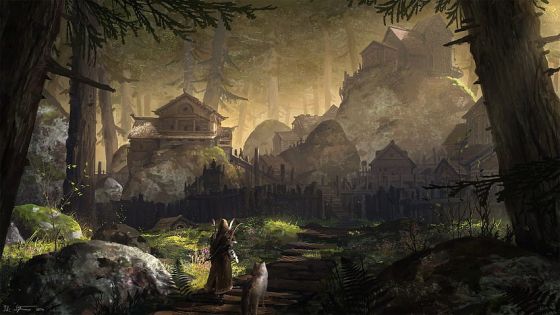Hamlet
A hamlet is a group of rural dwellings that are too small to be considered a village, but possess an organisation that places them above thorps. There are four types of hamlet, associated with type-6 and type-5 hexes, depending on whether one or two hammer symbols are present. These four types, described below, are familiarly known as communal hamlets, bailey hamlets (or "hamlet forts"), free hamlets or reeve hamlets (also known as "gallows hamlets").
Contents
In most cases, hamlets are made up of free persons, though the amount of freedom varies, as does local admistration. Very little opportunity for trading exists, though some products — like bread, flour, river access or a place to safely camp are readily available, depending on the hamlet encountered. The basis of prosperity for most everyone is the production and transshipment of food, wood and stone.
Communal Hamlet
Communal hamlets occur in Type-6 hexes that lack significant rivers (2 pts. or more) — indeed, these communities may be entirely dependent on groundwater wells. They're small and agrarian in nature, with a large part of the local hex's farmlands gathered together in a communal holding. While the inhabitants are free, ownership and harvests are collectivised for the good of all. A hamlet differs principally from a thorp in that the hex's farmers have chosen to dwell in a close-knit community rather than remain scattered through the countryside.
Population
| Buildings | Population |
|---|---|
| boat dock & hovel | 1-3 |
| communal holding | 9d8-8 |
| garner & hovel | 2d4-1 |
| gristmill | d4+d6-1 |
| ox tether & hovel | 1 or 2-3 |
| saw pit & hovel | 1d3+1d4+2 |
